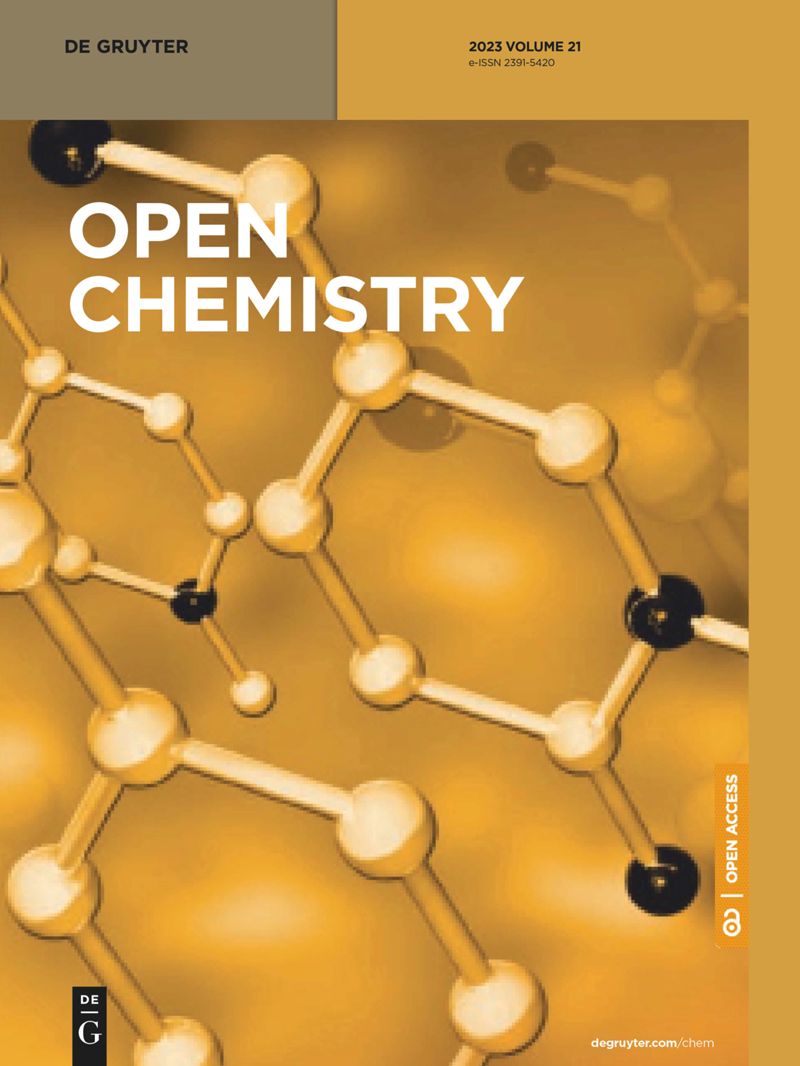铁和钼纳米粒子及其复合材料的绿色合成、表征和应用,以促进茄果类植物的生长
IF 1.9
4区 化学
Q3 CHEMISTRY, MULTIDISCIPLINARY
引用次数: 0
摘要
纳米材料已成为农业实践中不可或缺的各个方面,包括开发优化作物营养的纳米肥料。本研究利用番石榴叶提取物(GLE)探索了绿色合成的铁(Fe)和钼(Mo)纳米粒子及其复合材料的应用。重点是评估它们对番茄植物(Solanum lycopersicum)固氮和生长的影响。通过傅立叶变换红外光谱、紫外漫反射光谱、拉曼光谱和 X 射线衍射分析对纳米颗粒进行了表征。实验包括两种施用方法(土壤施用和植物直接喷洒),纳米粒子的浓度各不相同。结果表明,在土壤中施用 1%的复合纳米粒子和在植物上直接施用 3% 的钼元素最有利于番茄的生长和氮吸收。值得注意的是,1% 的复合处理在所有三个生长阶段都能显著提高芽长、分枝数和芽直径。相反,3% Mo 处理直接施用到植株上时,效果最佳,表现出显著的芽长、分枝数和芽直径。实验后的土壤养分分析进一步揭示了纳米颗粒应用的细微影响,与对照和其他浓度相比,1% 的复合处理提高了养分的可用性。这项研究为不断发展的农业纳米技术领域做出了贡献,强调了纳米粒子浓度和应用方法在影响植物生长和养分吸收方面的重要性,为可持续农业实践铺平了道路。本文章由计算机程序翻译,如有差异,请以英文原文为准。
Green synthesis, characterization, and application of iron and molybdenum nanoparticles and their composites for enhancing the growth of Solanum lycopersicum
Nanomaterials have become integral in various aspects of agricultural practices, including the development of nano-fertilizers for optimized crop nutrition. This study explores the application of green-synthesized iron (Fe) and molybdenum (Mo) nanoparticles, as well as their composites, using a guava leaf extract (GLE). The focus is on assessing their impact on nitrogen fixation and growth in tomato plants (Solanum lycopersicum ). The nanoparticles were characterized through Fourier Transform Infrared Spectroscopy, Ultraviolet Diffused Reflectance Spectroscopy, Raman Spectroscopy, and X-ray diffraction analysis. The experiment involved two application methods (soil and direct plant spraying) with varying nanoparticle concentrations. Results indicate that the 1% composite nanoparticles applied to the soil and 3% Mo directly on plants yield the most favorable growth and nitrogen uptake in S. lycopersicum . Notably, the 1% composite treatment demonstrated significant enhancement in shoot length, number of branches, and shoot diameter at all three growth stages. Conversely, the 3% Mo treatment when applied directly to plants exhibited optimal results showing substantial shoot length, number of branches, and shoot diameter. Post-experimental soil nutrient analysis further revealed the nuanced effects of nanoparticle applications with 1% composite treatments enhancing nutrient availability compared to control and other concentrations. This research contributes to the evolving field of agri-nanotechnology emphasizing the importance of nanoparticle concentration and application method in influencing plant development and nutrient uptake, paving the way for sustainable agricultural practices.
求助全文
通过发布文献求助,成功后即可免费获取论文全文。
去求助
来源期刊

Open Chemistry
CHEMISTRY, MULTIDISCIPLINARY-
CiteScore
3.80
自引率
4.30%
发文量
90
审稿时长
6 weeks
期刊介绍:
Open Chemistry is a peer-reviewed, open access journal that publishes original research, reviews and short communications in the fields of chemistry in an ongoing way. The central goal is to provide a hub for researchers working across all subjects to present their discoveries, and to be a forum for the discussion of the important issues in the field. The journal is the premier source for cutting edge research in fundamental chemistry and it provides high quality peer review services for its authors across the world. Moreover, it allows for libraries everywhere to avoid subscribing to multiple local publications, and to receive instead all the necessary chemistry research from a single source available to the entire scientific community.
 求助内容:
求助内容: 应助结果提醒方式:
应助结果提醒方式:


